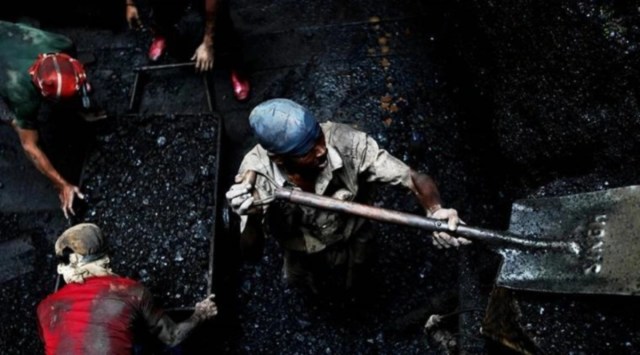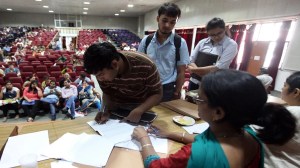- India
- International
Coal-fired projects back on, mega lithium battery storage push in new power policy blueprint
The renewable energy thrust of the last ten years also means a projected battery storage requirement in 2031-32 of between 51 GW to 84GW and assumes a daily usage rate of 5-hours.
 The inertia, which imparts stability to the grid, has been declining due to poor progress of hydro power and zero inertia solar generators, a major concern that the plan document does not seem to address. There is also no assessment of ramping rate for thermal plants under various scenarios of solar generation going out.
The inertia, which imparts stability to the grid, has been declining due to poor progress of hydro power and zero inertia solar generators, a major concern that the plan document does not seem to address. There is also no assessment of ramping rate for thermal plants under various scenarios of solar generation going out.
A new blueprint for the country’s power sector planners – the National Electricity Plan for 2022-27 – marks a discernible reversal in the policy thrust from its last edition, where the focus was almost entirely on renewable energy for incremental capacity addition and fresh coal-fired capacity was virtually ruled out. The fresh draft, in a tacit admission of the ground realities, cites the need for fresh coal-based capacity ranging from 17 GW to nearly 28 GW till 2031-32, over and above an under-construction coal based capacity of 25GW (1 giga watt or GW is equal to 1000 mega watts or MW).The renewable energy thrust of the last ten years also means a projected battery storage requirement in 2031-32 of between 51 GW to 84GW and assumes a daily usage rate of 5-hours. This, at estimates of Rs 10 crore per MW, could translate into investments into battery storage of between Rs 5 lakh and Rs 8 lakh crore over the next ten years as backup for renewable capacity, that too for operations for less than a quarter of a day on an average.
Despite projecting an increase in the PLF of coal fired plants from 55 per cent up to 2026-27 to 62 per cent in 2031-32, the continuing reliance on old, inflexible coal-fired plants for base load capacity and a pronounced reliance on renewable generation for meeting capacity addition targets over the past decade or so has thrown up challenges of a grid being increasingly powered by renewables available only during certain parts of the day that do not necessarily align with the peak demand curve.
While there was an expectation that the policy document would offer a plan to counter RE variability with flexible thermal response, it seems to lack clarity on how the renewables-dominated grid will be actually managed. The inertia, which imparts stability to the grid, has been declining due to poor progress of hydro power and zero inertia solar generators, a major concern that the plan document does not seem to address. There is also no assessment of ramping rate for thermal plants under various scenarios of solar generation going out.
What it seems to have pegged its faith on its battery storage. “Battery Energy Storage systems (BESS) especially based on Lithium – ion batteries are one of the storage options. The cost of the BESS is reducing in an unprecedented way making it one of the preferred options for deployment. BESS has various advantages of balancing the grid against load fluctuations, intermittency in generation etc. Energy storage can provide energy time-shifting which can be useful with the large-scale deployment of variable renewable energy sources. However, the storage requirement depends on the shape of the demand curve and the extent of RE penetration. Energy storage technologies can also provide operating reserve requirements, balancing, ramping and RE integration services,” the plan document said.
According to experts, the only practical alternative are hybrid generation models blended with off-stream pumped storage projects, where, everyday, after the sun rises and solar output is more than absorbing capacity of the grid, after factoring in the minimum thermal output necessary for grid security, the rest of the solar generation can be diverted to water-based energy storage or pump storage plants (PSP). This will basically perform solar energy shifts and provide backup power. Faster emergency response like primary and secondary response and voltage support can be the specialised function of battery energy storage systems, where India is heavily dependent on imported inputs, especially from China.

To put the potential funding requirement if battery storage is to be relied on in perspective, the total fund requirement for the period 2022-27 is estimated to be Rs. 14.30 lakh crore, which also includes a likely expenditure during 2022-27 for advance action for the projects expected to get commissioned during 2027-2032. The total fund requirement for the period 2027-2032 has been estimated to be Rs 17.16 lakh crore.
Former chairman Central Electricity Authority and MD of RE consulting firm Power and Solutions, Ravinder, said that PSP projects require a barrage on the river and have greater environmental impact. “For energy shift we need an off-stream project with a separate upstream reservoir picking from the river bottom to a nearby hill. No barrage on the river is required. During charging the water is lifted to the reservoir and during discharge the water generates electricity. It’s a closed water cycle with 6 per cent evaporation loss and the water cycle efficiency is 70 percent, he said. The CEA report has given a budget of 8 lakhs crore for BESS for a 10 year period, which will have a life of 6 years and hence doesn’t seem viable, he added.
The advantage of water-based systems is that they are economical, have a life of 50 years, there are no corrosive materials, it is mostly indigenous technology and would be employment intensive,” another sector expert said.
A technology partnership
The ‘inferred’ reserves of 5.9 mn tonnes in J&K’s Reasi are in mineral form unlike Chile’s salt pans. However, Chile-based SQM, world’s largest producer of lithium, has a venture in Australia to tap lithium in mineral form.
According to the plan, a coal-based capacity totalling to 4629 MW is considered for likely retirement during the study period of FY 2022-27 while no coal or gas-based capacity has been considered for retirement during the period of FY 2027-32.
The country’s current installed generation capacity is 410 GW. Some of the issues that have come to the fore every summer since the reopening of the economy after the pandemic shutdown include the continuing reliance on old, inflexible coal-fired plants for base load capacity, a shortage of both coal and gas that fuel thermal capacity and a pronounced reliance on renewable generation for meeting capacity addition target. This reliance has thrown up challenges of a grid being increasingly powered by renewables available only during certain parts of the day that do not necessarily align with the peak demand curve.
Of the installed capacity, the capacity from non-fossil fuel-based energy resources was 175 GW, which is well over 40 per cent of the total electric power installed capacity, with solar and wind accounting for the biggest chunk of this.
India’s vast fleet of coal-fired thermal power plants of 200 MW series are more than 25 years old, run on old technology and do not promise robust reliability.
Apr 24: Latest News
- 01
- 02
- 03
- 04
- 05






































